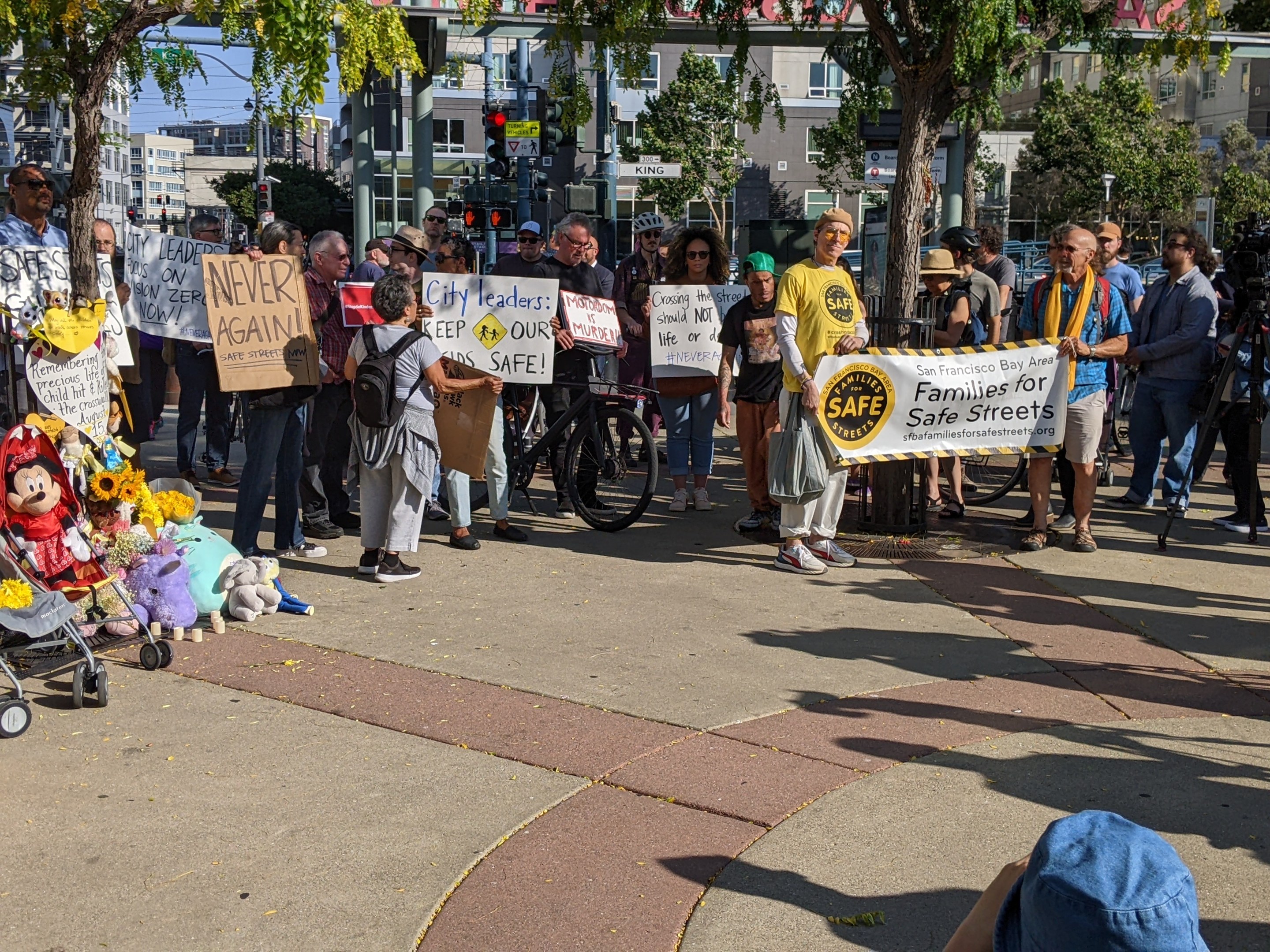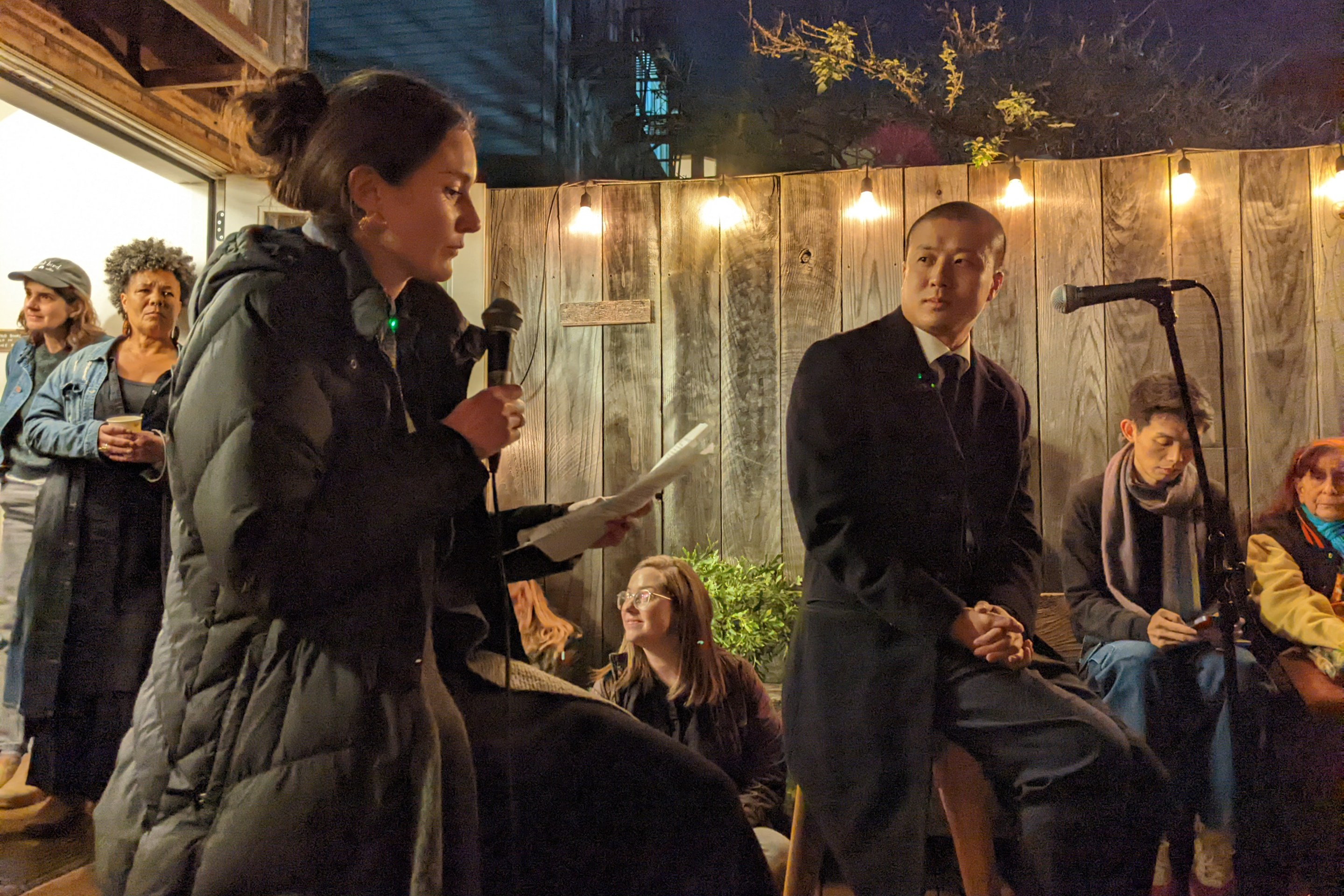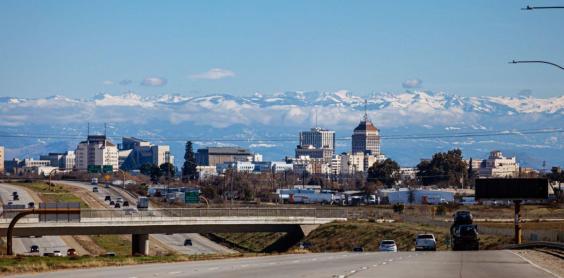If Streetsblog were doing communications and establishing transportation policy for Mayor London Breed, her press release issued Monday would never have gotten out the door. Below is how we would change it. Additions are in bold.
*** MEDIA ADVISORY ***
From the office of the mayor, with edits from Streetsblog:
Mayor London N. Breed today directed the San Francisco Municipal Transportation Agency (SFMTA) to address immediate street safety improvements to the 4th and King intersection in the South of Market neighborhood following last week’s fatal crash that resulted in the death of a 4-year-old girl. The Mayor has also asked SFMTA to prioritize proven safety improvements on dangerous streets citywide.
A woman was arrested on suspicion of striking a family with her car and killing a 4-year-old girl who was being pushed in a stroller in the crosswalk at the 4th and King intersection on Tuesday, August 15. The girl’s father was treated for life-threatening injuries, and, tragically, the child succumbed to her injuries shortly after her arrival at Zuckerberg San Francisco General Hospital.
“This is a heartbreaking incident that took the life of an innocent child, leaving a family changed forever and our community deeply saddened. I know I speak for every San Franciscan in continuing to hold this family in our thoughts and prayers,” said Mayor London Breed.
The death of a child is especially heartbreaking, but nobody should be killed or seriously injured on San Francisco's streets. The conditions that led to this tragedy were known but ignored for years. And they can be found all over the city. That's why the last thing we need is more 'thoughts and prayers.'
We need real action. We need real change. And we need that change to start today.
“Our streets and roads in San Francisco should be safe for everyone to enjoy without feeling their lives are in danger, which is why I have directed the SFMTA to take immediate action to prevent this from happening again. We will continue start to prioritize safety, especially for our children, to prevent anyone from being hit, injured, or killed by a driver.”
As per City protocol, the SFMTA convened a Rapid Response team with the San Francisco Department of Public Health (SFDPH) and the San Francisco Police Department (SFPD), to review the details of the crash and fatality. Although the incident is still under investigation, the SFMTA has identified street changes that could help prevent a similar occurrence. Specifically, the SFMTA will:
- Remove one southbound right-turn lanes from 4th Street onto King Street, leaving only one lane of vehicles turning across the crosswalk instead of two. This will reduce the number of conflicts between turning cars and people in the crosswalk.
- Change the traffic signal
so that drivers turning right from 4th Street onto King Street see a yellow arrow, instead of just a green light. The arrow reinforces the requirement for drivers to yield to pedestrians.to give pedestrians an independent green phase, with a red arrow for cars. Also, ban right on red. - The SFMTA will close ALL double-turning pockets in the city.
- The SFMTA will place concrete blocks, water barrels, or other significantly massive objects to prevent motorists from taking turns at excessive/unsafe speeds
“On behalf of myself and our entire agency, we are grieving for this family and their loss,” said Jeffrey Tumlin, SFMTA Director of Transportation. “SFMTA has the important and ongoing responsibility of managing a citywide street network that was originally built to prioritize vehicle speed and volumes, that should now better prioritize transit, walking and biking. This tragedy reminds us of the urgency needed to accelerate safety investments to this intersection and critical streets across the City.”
SFMTA Director of Transportation Jeffrey Tumlin is entrusted with changing how people get around on our streets and prioritizing safety. Unfortunately, although he says the right things, his actions are incredibly disconcerting. Case in point: removing the "no through traffic" restriction on slow streets, removing protected bike lanes from the Better Market Street project, and continually referring to unprotected bike lanes as "protected" to inflate the work they've done and to evade requirements to provide safety. Most infamously, he manipulated the SFMTA board into approving a center-running bike lane on Valencia. This facility has already sent at least two people to the hospital. He was also caught on video stereotyping cyclists and fanning anti-bike hate. He's even fought transit improvements that put the customer first but which threatened his power at SFMTA. Even on 4th and King, where a child was just killed, his best idea is a flashing yellow for cars, not a red arrow and an independent phase for pedestrians?
As a result, I'm putting Tumlin on review and will be working with him to reorient the city towards prioritizing safety, not parking or car throughput, and adhering to proven, international best practices.
According to the SFMTA, there are dozens of additional double-turn lanes in San Francisco, all of which will be assessed removed and given similar treatments as directed by Mayor Breed. Last week’s crash occurred at an intersection that is on San Francisco’s High Injury Network, which are the 12 percent of streets where 68 percent of severe and fatal collisions occur. The High Injury Network guides the City’s investments in infrastructure and programs by prioritizing change where it is needed most.
The Mayor has further directed the SFMTA to produce a plan and timeline for how the Agency will prioritize safety improvements on the rest of the High Injury Network streets by the end of 2024. The last thing this city needs is more studies or timelines. We need SFMTA to get to work:
Installing pedestrian improvements at intersections, includingDaylighting all intersections, providing more time for people on foot to cross the street, upgrading crosswalks, and installing solid, concrete features to slow turning cars.Detailed timelines toImmediately install seventeen quick-build projects that address systemic safety issues on High Injury Streets and prioritize mobility and safety for pedestrians, transit riders, and cyclists- To be clear: SFMTA will stop using plastic posts and will start using solid objects to enforce safety.
- And the city will BAN right on red citywide.
“This family is suffering such an unfathomable loss that should never have happened,” said Jodi Medeiros, Executive Director, Walk SF. “Crossing the street should not be life-or-death. We applaud Mayor Breed in calling for a suite of actions that will make many dangerous intersections safer, and we need City agencies to deliver on these actions immediately.”
San Francisco was the second city in the United States to adopt Vision Zero in 2014, an initiative to eliminate traffic fatalities and reduce severe traffic-related injuries. Through data, evaluation, and critical assessments, the City has been a leader in using proven tools to reduce crashes, including installing pedestrian safety improvements at intersections, building protected bike lanes, and reducing vehicle speeds. San Francisco continues to see high numbers of people injured and killed on City streets, despite its verbal commitments.
In 2022, San Francisco saw 39 traffic-related deaths – the highest fatality count since 2007, of which 28% were hit-and-run collisions. The cities of San Jose and Oakland also experienced some of the highest traffic-related deaths in a decade: 65 in San Jose and 36 in Oakland. The trend isn’t limited to the Bay Area - the National Highway Traffic Safety Administration (NHTSA) found that traffic fatalities in 2021 reached a 16-year high across the United States.
However, this is not an excuse.
Cities in other countries, and even some cities in the U.S., such as Hoboken, have seen dramatic decreases in traffic fatalities. Therefore, SFMTA will consult with and follow the CROW manual and institute Dutch best practices for pedestrian and bicycle facilities as their baseline, only to be modified when necessary to address the popularity of larger cars in the United States. In other words, SFMTA will stop "experimenting" and do what works, using proven designs.
Because speed is the leading cause of serious and fatal crashes in San Francisco and a trend that is increasing across the United States, Mayor Breed, City leaders and State legislators have worked together to address local and statewide speed limit laws.
San Francisco was the first City in the state to implement Assembly Bill 43, co-authored by then State Assemblymember David Chiu, which allows local jurisdictions to reduce speed limits in key areas. The first component of the Bill went into effect on January 1, 2022, authorizing cities to lower speed limits by 5 mph in districts with high business activity. San Francisco has since lowered speed limits from 25 mph to 20 mph on over forty commercial corridors citywide, including Valencia Street, Polk Street, and Ocean Avenue. Starting this fall, the SFMTA has plans to lower speeds on another 23 streets in Chinatown, Fisherman’s Wharf, North Beach, and Union Square.
However, lowering posted speed limits isn't enough. SFMTA needs to use every tool in the toolbox, including chicanes, speed bumps, steel bollards, iron traffic bells, etc., to physically enforce speed limits and make it difficult if not impossible to speed and drive recklessly.
Additionally, San Francisco is a sponsor of Assembly Bill 645, co-authored by Assemblymember Laura Friedman (D-Burbank), which would implement a five-year speed safety pilot program in six California cities, including San Francisco. AB 645 would enable the cities to install a limited number of speed cameras that would capture images of vehicle license plates traveling 11 mph more than the speed limit and send speeding tickets to the registered driver’s home. This technology has saved thousands of lives in the cities and states that have implemented it, but still remains illegal in California. The Bill would also help address the challenges of balancing limited policing resources and the equity concerns that have called for separating armed enforcement from non-violent violations. AB 645 has passed the State Assembly and is awaiting a vote in the State Senate this month. In the meantime, SFMTA will also install red-light cameras every time it services a traffic light.
Vision Zero is a key part of every SFMTA project, including the Geary Boulevard Improvement Project, recently approved at the SFMTA Board after hours of public debate. The Geary Project not only focuses on improving transit service, it is also intended to make Geary itself safer in an area where on average one person walking is injured in a traffic collision every month. The first phase of the Geary Project, which included similar improvements, has led to an 81 percent reduction in excessive speeding by private vehicles. These projects are critical to creating safer streets citywide. However, too many compromises were made. The Geary plan will now revert to center-running bus lanes and platforms, with protected bike lanes and intersections and pedestrian refuge islands added throughout. Likewise, all work on "Better" Market Street will stop and will revert to original plans to construct the promised raised, protected bike lanes. Valencia will also receive protected bike lanes from end to end. If parking has to be eliminated on one side of the street on some stretches, so be it.
This work is just one part of San Francisco’s vision for transportation, which aspires to provide safe, sustainable, and affordable transportation options for everyone, including seamless transit connections to local and regional destinations, efficient transit, walking and biking networks, and safe, clean and vibrant streets. San Francisco is striving to have at least 80 percent of all San Francisco trips taken by sustainable modes of travel, which means that City streets must accommodate growing numbers of people walking, biking, skateboarding, riding scooters, and taking transit.
Safety is everyone’s responsibility but safe street designs are the responsibility of the SFMTA. From now on, Levels of Service will never be used to evaluate a street or intersection. Instead, a reduction of VMT and assuring the safety of all street users will be the order of the day. If anybody at SFMTA doesn't like this new policy, the mayor will accept their resignation.
As part of the ongoing efforts to work towards a goal of zero traffic-related fatalities, Mayor Breed is calling on policymakers, advocates, and drivers to actually take part in creating a safer San Francisco rather than just talking about it. The Vision Zero initiative requires a total community approach which includes safer street designs. But that also means standing up to merchants and others who treat free private car storage as sacrosanct. It also requires safer vehicles on roadways and streets, and equally, safer drivers.
Every street must be safe for every user. It shouldn't take the death of a small child to make it clear that there can be no competing priority.






